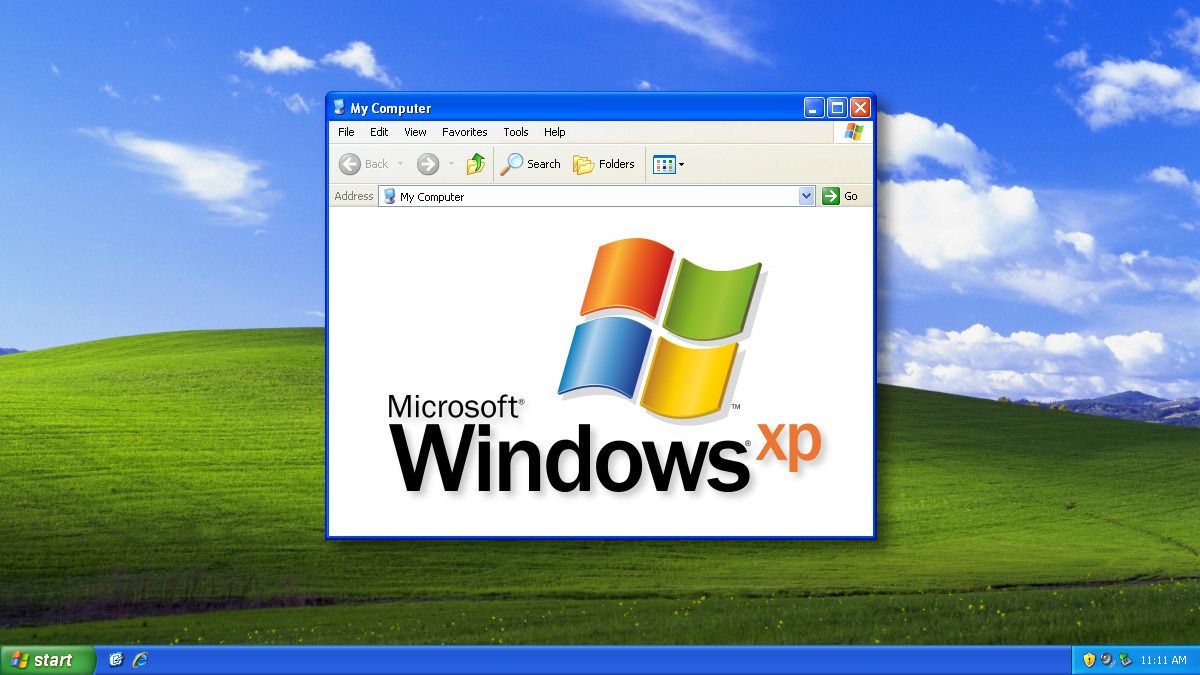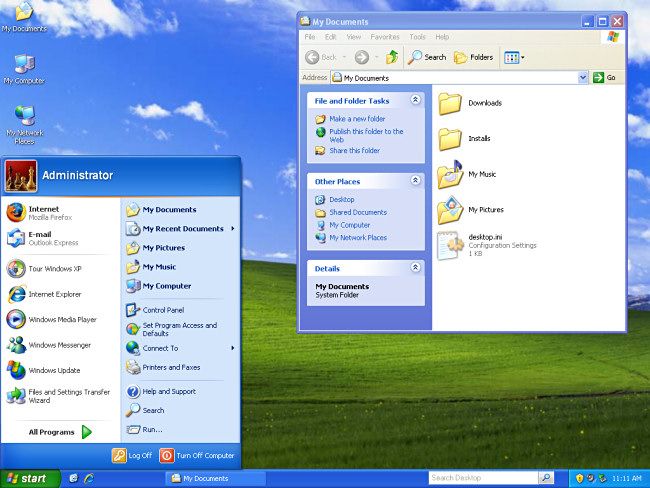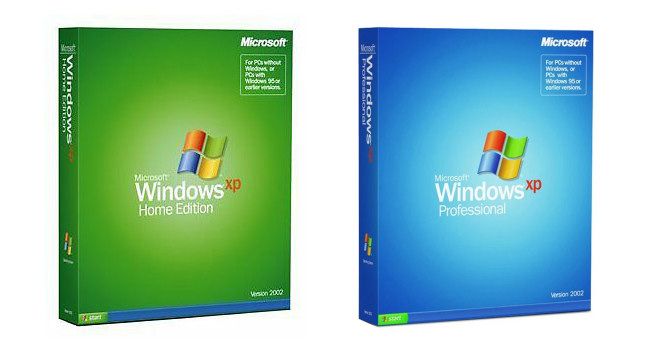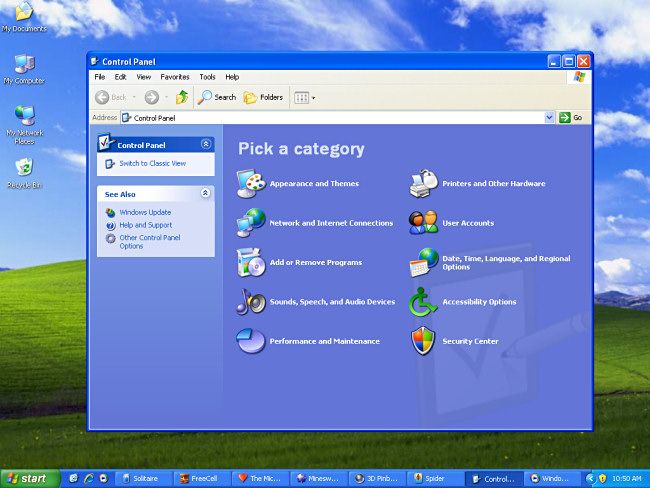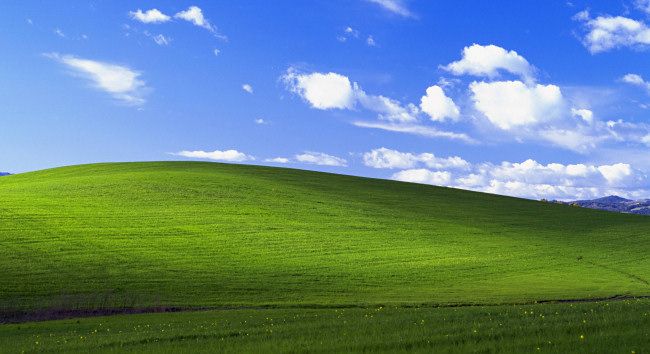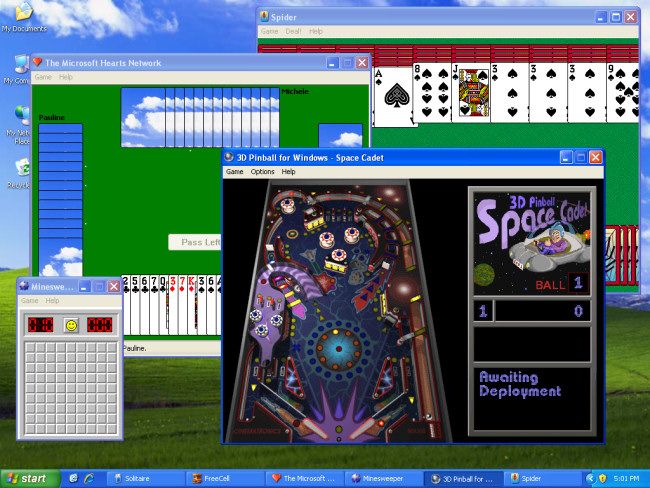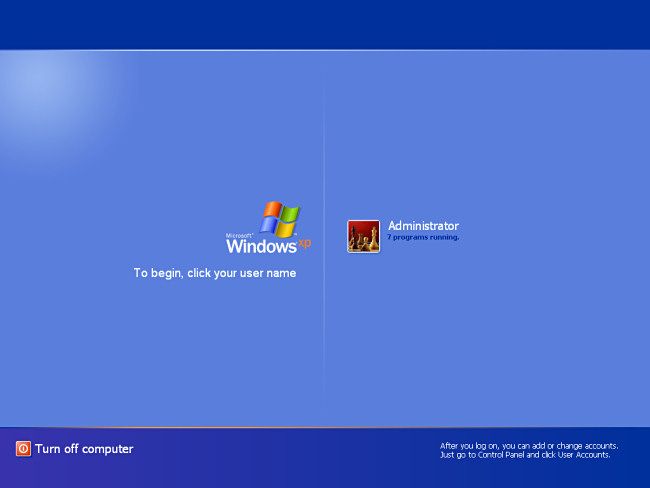Quick Links
Microsoft released Windows XP, one of the most popular and enduring versions of Windows ever, on October 25, 2001. It brought a graphical refresh and much-needed stability to consumer Windows. We take a look back at what made it special.
It Brought Windows NT to Consumers, Finally
In the early 1990s, Microsoft began working on a next-generation operating system called Windows NT that would leave Microsoft's MS-DOS-based roots behind. It incorporated a brand new kernel and other technologies that made it very stable and reliable. At first, NT proved too hardware intensive to run well on the typical consumer PC, so Microsoft aimed it at the professional and server markets. With Windows 2000, Microsoft almost brought NT to the consumer market, but decided to hold off and released Windows Millennium Edition (Me) instead. But the company knew the shift to NT was inevitable.
Windows Me (like Windows 95 and 98 before it) ran on technology carried over from MS-DOS that made it prone to frequent, catastrophic crashes. After Windows Me garnered a poor critical and customer response in 2000, Microsoft knew its next consumer OS would need to finally take up the NT mantle.
After extensive prototyping, including abandoning earlier attempts at a consumer NT-based operating system, Microsoft settled on a prototype called "Whistler" that would eventually turn into Windows XP. According to Microsoft, the "XP" meant "experience," with a promise to focus on user experience in the new release.
Unlike the divide between operating systems like Windows 95 and NT 4.0 in the past (or Windows Me and Windows 2000), XP would unify Microsoft's consumer and professional Windows products under one brand, albeit in two different editions.
Aimed at consumers, Windows XP Home Edition sold for $199 ($99 for an upgrade version). And Windows XP Professional cost $299---or $199 if you upgraded from a previous professional version of Windows. The two main editions cost about $307 (for Home) and $461 (for Pro) in today's dollars when adjusted for inflation.
Like any new version of Windows, XP upped the system requirements. Microsoft had to make sure people could enjoy the new graphical effects and more complex system processes handling things in the background. XP required a 233 MHz or higher CPU, 64 MB of RAM, 1.5 GB of free hard disk space, and a video card that supported 800x600 resolution or higher.
Graphical Flair
Windows XP brought eye candy to Windows in a big way, marking the first significant departure from the classic grey Windows theme introduced in Windows 95. Thanks to a visual style called Luna, Windows XP defaulted to a colorful design that featured a blue taskbar with a green Start button, blue window title bars, and bright red "X" buttons to close Windows.
To tie in with the color scheme, Microsoft chose a photograph (titled "Bliss") of a gentle grassy hill with a blue sky dotted with clouds as the default XP desktop background image. Former National Geographic photographer Charles O'Rear took the photo near Napa Valley, California in 1996.
Although some criticized the new XP theme as looking like a Fisher-Price toy, thanks to a new visual style system, themes could easily be changed. There was even a "Classic" theme similar to Windows 2000.
In another visual improvement, Windows XP brought anti-aliasing to system fonts in a significant way with ClearType rendering, which provided sub-pixel rendering for fonts. It aimed to make fonts look better on LCD monitors that were then starting to gain more widespread use at the time.
Windows XP also included a set of colorful new icons with rounded corners, smooth gradients, and more color depth than usual. For the first time, Windows icons could support an alpha channel for transparency and drop shadow effects. Overall, Windows XP was a gorgeous step forward for Windows, although it didn't keep some die-hard fans from grumbling.
Other New XP Features
Windows XP gained dozens of new features over previous versions of Windows. Here are just a handful of notable ones:
- A two-column Start menu that allowed pinning apps.
- A taskbar can group application windows under a single button.
- Content-aware Windows Explorer window formats for music and other types of media.
- Fast User Switching for changing user accounts quickly without logging out.
- Thumbnails in Windows Explorer that show previews of images and other documents.
- Pop-up "word bubble" notification messages from the taskbar---new to consumer Windows but borrowed from Windows 2000.
- Automated System Recovery that detected system problems and aided recovery from crashes or system file failure.
- In Networking, Windows XP gained several significant new features, such as a firewall, Wi-Fi support, and Internet Connection Sharing.
- Windows Product Activation (WPA), which discouraged casual piracy by phoning home to Microsoft about each installed copy of Windows XP via the Internet.
The Games of Windows XP
Windows XP carried over a large array of games from Windows Me and other previous versions of Windows. It included classic games like Solitaire, Minesweeper, and Freecell, and also more recent additions to the Windows gaming pantheon like Spider Solitaire, Hearts, and 3D Pinball: Space Cadet.
XP also shipped with four online multiplayer games that originally launched with Windows Me: Internet Backgammon, Internet Checkers, Internet Hearts, Internet Reversi, and Internet Spades. When playing the internet-enabled games, players would be matched up automatically with other Windows gamers through servers run by Zone.com.
Even though Windows XP ran on Windows NT architecture, it maintained backward compatibility with previous Win32 games for Windows 95 and 98 while paving the way for future gaming Windows experiences with robust DirectX support.
Windows XP's Launch and Legacy
Microsoft launched Windows XP with a $1 billion marketing campaign on October 25, 2001, hosting an event in New York City that also paid tribute to those lost in the attacks on September 11, 2001.
Many initial reviews were generally good, although some controversies surrounded the release. The press reported on driver issues and multiple security bugs that Microsoft quickly patched.
Also, reviewers and customers were concerned about Windows XP's new activation system, which potentially required re-activation when certain aspects of your hardware configuration changed. If someone didn't have Internet access, they could call a toll-free number to activate with a live representative.
Ultimately, those were just hiccups on the way to Windows XP's success. Within two months of release, XP sold over 17 million copies, with sales speed exceeding those of Windows 95 and Me. That total grew to over 210 million by 2004, and while there are no hard numbers on total lifetime sales of XP, guesses range anywhere between 500 million and 1 billion copies depending on where you look.
Ultimately, the success and stability of Windows XP inspired fierce loyalty from fans. When it came time for Microsoft to pull the plug, customers raised a ruckus and Microsoft extended support for the OS until 2014. It's no surprise: Windows XP is still one of the greatest versions of Windows ever released, and it will always have its important place in PC history.
Happy Birthday, Windows XP!

